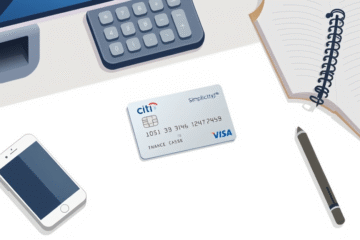Rebuild Your Credit with a CA$1,000 Card Option
Bad Credit can feel like a significant barrier to achieving financial stability, but a credit card designed for individuals with poor credit can be a valuable tool for rebuilding your credit history.
Get the credit card that fits your lifestyle!
Start building your financial future today!
In this article, we will explore the benefits of having a CA$1,000 initial limit on credit cards, the impact of higher interest rates and associated fees, and effective strategies for responsible credit usage.
By understanding how to manage these factors, you can improve your credit score over time and take control of your financial future.
Understanding Low-Limit Cards for Damaged Credit
For individuals grappling with bad credit, a CA$1,000 initial limit credit card can be a crucial tool on their journey to financial recovery.
Issuers design these cards to provide a manageable starting point for responsible credit usage, addressing the unique needs of those with a damaged credit history.
The reason for a modest limit stems from the need to mitigate risk while granting consumers access to credit facilities.
This limit encourages users to make small, regular purchases, promoting disciplined spending habits.
According to a study by IFAD, expanding access to financial infrastructure is crucial for inclusion, making such credit cards invaluable.
Financial challenges faced by this group often include high-interest rates and additional fees, yet these cards provide a stepping stone to rebuilding financial confidence.
The key is to pay off the balance in full each month, which can significantly improve credit scores over time.
Moreover, consistent and timely repayments demonstrate creditworthiness, gradually opening the door to higher credit limits and more favorable lending terms in the future.
Thus, despite their limitations, low-limit credit cards serve as a powerful instrument for restoring financial health and stability.
Benefits of a CA$1,000 Starter Limit
Starting with a CA$1,000 credit card limit offers a strategic advantage for individuals with poor credit histories.
This limit provides a foundation to master financial habits while paving the way for credit rebuilding.
Coastal Community Credit Union, for example, offers guidance to help individuals enhance their credit history through their resources.
Exploring competitive options like this can ensure you get the most out of your credit card.
- Low credit limit lowers overspending risk
- Manageable debt enhances payment success
- Relevant credit practice boosts future credit opportunities
- Easy approval odds help secure financial tools
Through this approach, cardholders gain confidence in credit management and enjoy the benefits of easier purchase handling.
By focusing on a low-limit card, you create an environment where responsible credit behavior becomes second nature, leading to next-level financial growth.
Responsible Usage Strategies
To effectively rebuild your credit with a CA$1,000 limit credit card, consider these strategic steps.
- Pay before the due date: Regularly paying off your balance on time is crucial in boosting your credit score, as timely payments reflect financial responsibility.
- Maintain low utilization: Aim to keep your credit utilization under 30%, which shows lenders that you are not overly dependent on credit. This means limiting spending to CA$300 or less each billing cycle.
- Avoid unnecessary fees: Be cautious of hidden charges or yearly fees, and consider referring to resources like the personal finance queries on Hugging Face for tips on avoiding extra costs.
- Regularly monitor your credit: Frequently check your credit report for any errors or areas of improvement. This proactive measure can provide insights into your financial health.
- Adhere to budgeted charges: Create and stick to a realistic budget to ensure that your credit card spending doesn’t exceed your repayment capabilities, helping to prevent accumulating debt.
Typical Fees and Interest to Expect
Credit cards geared toward those with bad credit, often have several key fees and higher interest rates.
It’s important to be aware of these common charges as they directly impact your cost of credit.
First, there’s the annual fee, which can range up to CA$120 per year, providing users the ability to improve their credit score at a cost.
Additionally, late payment fees could significantly add to your debt if you miss the due date.
With amounts as much as CA$35, paying on time is essential to avoid inflated charges.
Furthermore, these types of cards commonly have an APR range of 19.99% to 29.99%, which is notably higher than those for individuals with good credit scores.
This makes it crucial to pay off the balance each month to minimize interest accumulation.
It’s vital to manage these fees effectively.
Opt for cards with zero or lower annual fees if possible, though these might be limited.
Set automatic reminders to avoid late payment penalties and manage expenses within your CA$1,000 credit limit to maintain a low credit utilization ratio.
Additionally, paying the balance in full each billing cycle will negate the high APR impact, saving you money over time.
| Fee Type | Typical Cost | Tip to Reduce |
|---|---|---|
| Annual Fee | CA$75-CA$120 | Seek no-fee option |
| Late Payment Fee | CA$35 | Set up payment reminders |
| APR | 19.99%-29.99% | Pay balance in full monthly |
Credit Score Impact Over Time
Maintaining a CA$1,000 limit credit card responsibly can have a significant impact on rebuilding your credit score over time.
The key lies in emphasizing the credit utilization ratio and payment history, which are crucial factors in determining your FICO score.
Keeping your credit utilization below 30% by ensuring your balance does not exceed CA$300 at any given time is vital.
This practice is considered favorable by credit scoring models, as outlined by credit scoring experts.
Furthermore, consistently making on-time payments reflects positively on your payment history, which by some measures, accounts for 35% of your FICO score.
On-time payments reinforce your reliability as a borrower and improve your creditworthiness over time.
However, be cautious about high-interest rates associated with credit cards for poor credit.
Aim to pay off your balances in full each month to avoid accruing debt and incurring additional fees.
Regular responsible use of your credit card, combined with avoiding unnecessary purchases, will facilitate a healthier financial standing and contribute to a gradual improvement in your credit score.
In conclusion, while bad credit poses challenges, utilizing a credit card responsibly can pave the way for financial recovery.
By making regular purchases and paying off your balance, you can enhance your credit score and open doors to better financial opportunities.



0 Comments